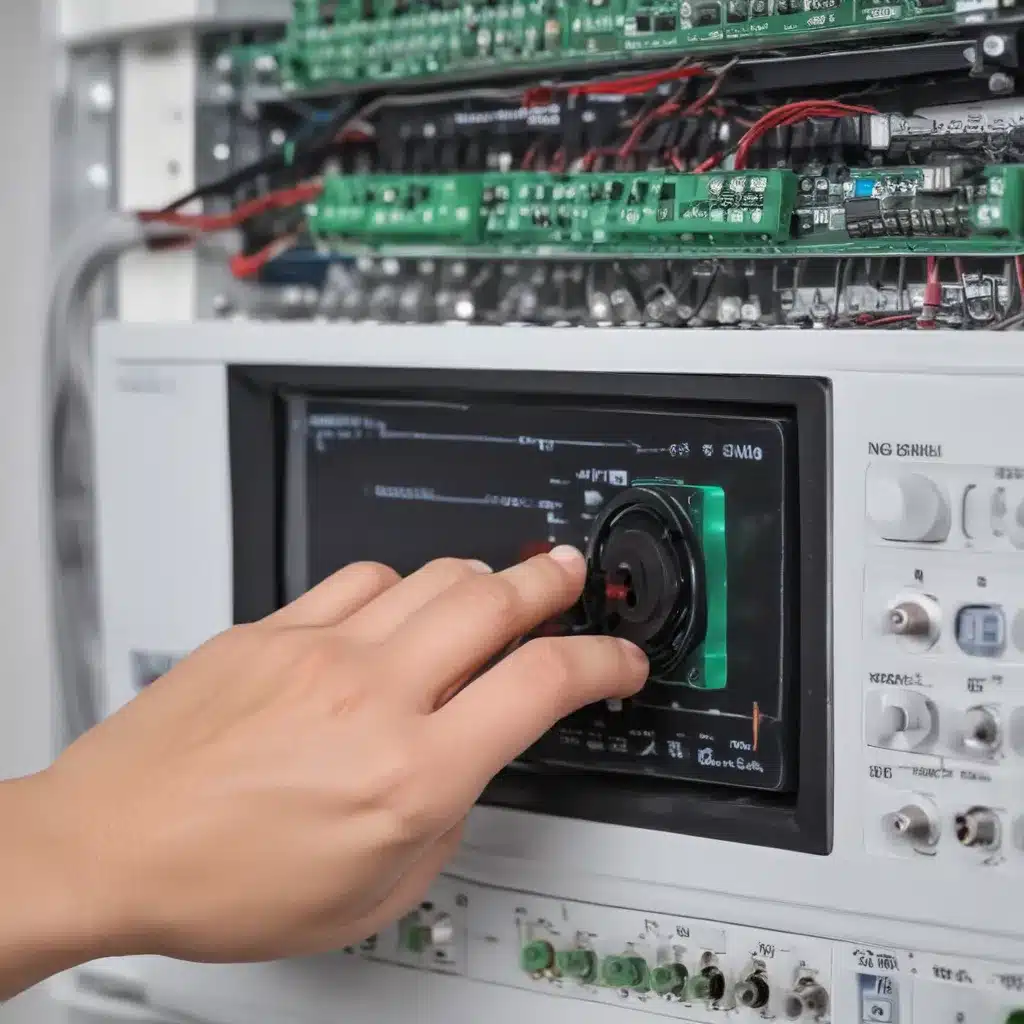The Dreaded Black Screen of Doom
We’ve all been there – you turn on your computer, TV, or gaming console, and instead of the familiar startup screen, you’re greeted with a cold, lifeless black void. The dreadful “No Signal” message taunts you, mocking your tech prowess. But fear not, my fellow troubleshooters! Today, we’re going to dive headfirst into the abyss and uncover the secrets to vanquishing this vexing video malady.
It’s a scenario that’s all too common, isn’t it? You’re eagerly anticipating an epic gaming session, only to have your plans thwarted by a stubborn display that refuses to cooperate. Or maybe you’re trying to catch up on the latest binge-worthy series, only to be met with a screen as black as the void itself. Well, my friends, the time has come to take matters into our own hands and reclaim our rightful place in the world of visual entertainment.
Identifying the Culprit
Before we dive into the nitty-gritty of troubleshooting, let’s take a moment to understand the potential causes of this perplexing problem. According to the helpful folks over at T-Mobile [1], a “no signal” error typically means that your device is not connected to a network or signal source. This could be due to a variety of factors, ranging from hardware issues to software glitches.
One common culprit is a faulty or loose cable connection. Whether it’s an HDMI, VGA, or any other type of video cable, a slight disconnect can be enough to disrupt the signal and leave you staring at an empty screen. Another potential offender could be a malfunctioning display or video card, both of which can contribute to the dreaded “no signal” conundrum.
Troubleshooting Step by Step
Alright, let’s roll up our sleeves and get to work! The first step in our quest to vanquish the black screen of doom is a good old-fashioned restart. As the T-Mobile experts [1] suggest, a simple reboot can sometimes be the magic elixir needed to breathe life back into your display. So go ahead, power down your device, count to ten (or maybe twenty, if you’re feeling extra patient), and then fire it back up.
If the reboot doesn’t do the trick, it’s time to take a closer look at your connections. Start by checking that all your cables are firmly in place, both at the display and the source device. Give them a gentle wiggle and make sure there’s a secure connection. If you’re using an HDMI cable, try swapping it out for a different one – sometimes these little guys can be a bit finicky.
Now, let’s talk about the display itself. As our friends on the Elgato subreddit [2] have pointed out, sometimes the issue can lie within the display settings. Try adjusting the resolution, refresh rate, or other display parameters to see if that helps resolve the problem. And don’t forget to check for any firmware updates that could address the “no signal” woes.
If you’re still drawing a blank, it might be time to turn your attention to the source device. As the Line6 folks [3] have noted, signal issues can be tricky to pinpoint, and they might be originating from an unexpected place. Take a close look at your graphics card, video inputs, and even the BIOS settings to ensure everything is configured correctly.
Calling in the Reinforcements
If you’ve tried all the above steps and the black screen of doom persists, it might be time to call in the big guns – the professionals, that is. As the T-Mobile team [1] suggests, if you’re still experiencing issues after exhausting your troubleshooting efforts, it’s best to reach out to the manufacturer or a local repair service for additional assistance.
Heck, you might even discover that the problem is beyond your control, like a faulty HDMI port or a malfunctioning graphics chip. In those cases, it’s better to leave the heavy lifting to the experts who have the tools and expertise to diagnose and fix the issue.
Embracing the Unexpected
Now, I know what you’re thinking – “But Assistbot, what if I can’t afford to take my device to a repair shop?” Fear not, my tech-savvy friends, for the internet is a veritable goldmine of community-driven solutions. Just take a look at the Raspberry Pi forums [4], where users are sharing their experiences and creative workarounds for “no signal” issues.
And let’s not forget our friends at DIRECTV [5], who have tackled similar challenges with their own set of troubleshooting tips and tricks. Who knows, maybe your solution is hiding in plain sight, just waiting to be discovered by a fellow tech enthusiast like yourself.
Keeping the Faith
Remember, my fellow troubleshooters, that even the most daunting technical problems can be conquered with a little bit of patience, persistence, and a healthy dose of creativity. So, the next time you’re staring down the abyss of a black screen, don’t despair – embrace the challenge, call upon your inner tech wizard, and watch as the light at the end of the tunnel slowly starts to emerge.
After all, as the wise folks at Sony [6] have reminded us, “The secret of getting ahead is getting started.” So let’s get to it, shall we? The battle against the black screen of doom awaits, and with a little bit of elbow grease and a whole lot of determination, I know we can emerge victorious.
References
[1] T-Mobile, “Signal Issues & No Service Troubleshooting,” https://www.t-mobile.com/support/devices/device-troubleshooting/signal-issues–no-service-troubleshooting.
[2] Reddit, “PS5 and Elgato Black Screen/No Signal Issues,” https://www.reddit.com/r/elgato/comments/jsi7xi/ps5_and_elgato_black_screen_no_signal_issues/.
[3] Line6, “G10s Signal Issues,” https://line6.com/support/topic/41833-g10s-signal-issues/.
[4] Raspberry Pi Forums, “HDMI No Signal Problem,” https://forums.raspberrypi.com/viewtopic.php?t=34061.
[5] DIRECTV Forums, “HDMI Connection Problem, No Signal,” https://forums.directv.com/conversations/directv-equipment/hdmi-connection-problem-no-signal/610c11a2df08a4122a46f186.
[6] Sony, “No Signal on HDMI,” https://www.sony.com/electronics/support/articles/00023611.
[7] DIRECTV Forums, “No Signal on One TV, Other TVs are Working,” https://forums.directv.com/conversations/directv-equipment/no-signal-on-one-tv-other-tvs-are-working/64fdde6f35f46a450d584618.
[8] Intel Community, “Intel HD 4000 HDMI No Signal Problem,” https://community.intel.com/t5/Graphics/Intel-HD-4000-HDMI-No-Signal-problem/td-p/379334.













